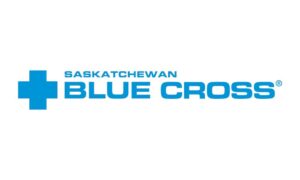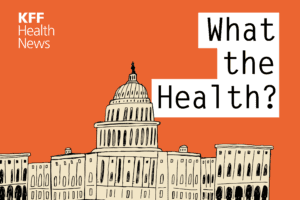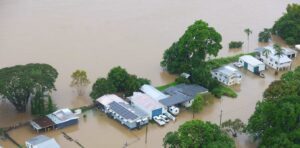Mutual cat bond and ILS funds recover ground as hurricane Milton impact clearer

Yesterday, all of the 1940’s Act registered US mutual investment funds that allocate to catastrophe bonds and other insurance-linked securities (ILS) increased their net asset values (NAV), in some cases recovering a meaningful percentage of the declines recorded due to hurricane Milton.
As we’ve reported, one of the best ways to visualise the potential for losses and investment manager sentiment is in the daily pricing of the registered 40’s Act mutual funds that allocate solely to opportunities across the catastrophe bond, insurance-linked securities (ILS) and reinsurance space.
Unlike UCITS catastrophe bond funds that price once a week, the US mutual cat bond and ILS funds price daily and with no pricing sheets available on a daily basis, it is down to the investment managers operating them to make best effort changes to net asset value of the funds.
The managers will have their own sophisticated models and views on risk and the potential implications of a major catastrophe such as hurricane Milton.
For three days in a row, some of the asset managers with ILS strategies in the mutual fund format cut their NAVs, as they grappled to understand the potential impacts and losses that could be faced.
Hurricane Milton has not made this easy, as evidenced by the significant range of loss estimates that came out, from as low as $10 billion up into the triple digit billions at one stage.
While that did narrow, it did not do so significantly and even now there are still quite wide ranges being discussed, although many of our sources are now focusing on the $30 billion to $50 billion range as somewhere to start. Post-landfall, as we were by yesterday, the clarity tends to increase as well.
With that slightly greater clarity on the potential for industry losses from hurricane Milton, the investment managers offering these mutual cat bond and ILS funds have increased their NAVs at yesterday’s pricing, some by a meaningful amount.
The upshot is that funds are now less negative since Milton marks to pricing began to be made.
When we reported on these funds yesterday, the more catastrophe bond focused Stone Ridge High Yield Reinsurance Risk Premium Fund strategy was down -6.91% since the hurricane Milton implications began to get priced in.
Yesterday, Stone Ridge’s cat bond fund saw its NAV marked up by 2.32%, now leaving it just -4.75% lower than pre-Milton.
The Stone Ridge Reinsurance Risk Premium Interval Fund which allocates across the spectrum of ILS and reinsurance-linked assets with a particular focus on sidecars and private quota shares, as well as other collateralized reinsurance arrangements, was down -7.67% since Milton started getting priced in.
Yesterday, Stone Ridge marked this fund up as well, with its NAV rising 3.78%, leaving it at -4.18% down since before Milton pricing began.
It’s interesting that the cat bond fund is now down more than the interval fund, as you would typically expect a catastrophe bond fund to fair better after a catastrophe event like Milton. It will be interesting to see how the NAVs move going forwards.
Moving onto Amundi US and its Pioneer dedicated ILS funds, these had both been marked down much less than Stone Ridge’s.
When we covered these funds yesterday, the Pioneer CAT Bond Fund was down -2.94% since Milton marking started.
Yesterday, at its pricing, this mutual catastrophe bond fund strategy operated by asset manager Amundi US was marked back up by 2.58%, leaving it down only -0.43% on Milton.
The Pioneer ILS Interval Fund, that allocates to strategies across quota shares, sidecars and collateralized reinsurance as well, was down by -2.36%.
But yesterday this Pioneer ILS Interval Fund also recovered much of its decline, rising 2.21%, leaving it down by only -0.21% on Milton.
That’s a notable difference to Stone Ridge’s cat bond and interval funds, so again it will be interesting to watch how these all continue to move over the coming days.
It seems Amundi US has marked its fund down much less severely. However, we suspect the true marks may be somewhere between Stone Ridge’s and Amundi US’, with just differences in pricing strategy showing.
Once the broker-dealer catastrophe bond pricing sheets come out there will be further adjustments, we expect. But for the interval style funds, it will take much more time to gain clarity on how hurricane Milton losses will affect them and whether it is attritional, or more meaningful as things develop.
One thing is clear though, for the Stone Ridge and Amundi US mutual cat bond and ILS funds, hurricane Milton losses are going to fall well within returns earned year-to-date, it appears, perhaps within just the last quarter of returns. Time will tell though and there is a lot of development that could happen over the coming weeks, as Milton’s industry loss gets clearer.
Finally, the Ambassador US mutual catastrophe bond fund strategy, operated by advisor Embassy Asset Management, which fell at first but was then marked up two days in a row, leaving it at -1.06% since Milton when we covered these funds yesterday.
This cat bond fund also saw a further gain at yesterday’s pricing, rising 0.98% on the day and leaving it at just almost -0.1% since hurricane Milton now.
Which suggests the manager expects very little in the way of losses, or that its potential losses are being outpaced by the season gains being made by catastrophe bond funds at this time of the year.
Now, the average decline on hurricane Milton for mutual catastrophe bond funds is almost -1.80%, while for the two interval style ILS funds that invest more broadly across reinsurance and ILS the average decline is almost -2.20%.
As said, we suspect more movements in the catastrophe bond positions once pricing sheets come out later today, so we could see further adjustments over the coming days as the potential ramifications of hurricane Milton get clearer.
Also read:
– Milton loss below $50bn may not be sufficient to move pricing: Jefferies.
– Milton could drive property catastrophe reinsurance rates up at 1/1 2025: KBW.
– Most mutual cat bond & ILS funds slid a little further on Milton’s final approach.
– Cat bond funds can still finish the year positively: Twelve Capital’s Wrosch.
– Hurricane Milton losses likely below a 5% cat bond market impact: Icosa Investments.
– Hurricane Milton: Pre-landfall broker loss estimates ranged $15bn to $40bn.
– Hurricane Milton Cat 3 landfall in Sarasota. Worst case Tampa loss scenarios avoided.
– Hurricane Milton: Insurance, reinsurance, cat bonds, ILS ready to respond.
– Some mutual cat bond and ILS fund NAVs fall further on hurricane Milton threat.
– Hurricane Milton industry loss at $25bn+ changes pricing narrative: Goldman Sachs.
– Hurricane Milton cat bond loss potential still in wide range: Icosa Investments.
– Hurricane Milton seen denting cat bond market -1.4% (excl. surge): Plenum.
– 33% chance hurricane Milton loss above $50bn. Would drive hard market: Euler ILS Partners.
– Hurricane Milton Cat 5 again. Tracks slightly south. Uncertainty still high, loss range wide.
– Safe to say hurricane Milton likely a $20bn+ insurance market event: Siffert, BMS.
– Hurricane wind speeds forecast across entire Florida Peninsula as Milton approaches.
– Mexico’s catastrophe bond presumed safe from hurricane Milton.
– Stone Ridge leads managers cutting mutual cat bond or ILS fund NAVs on hurricane Milton.
– Hurricane Milton could be a huge test for the entire (re)insurance market: Evercore ISI.
– Hurricane Milton losses could amount to tens of billions, but uncertainty high: BMS’ Siffert.
– As hurricane Milton intensifies, Mexico’s catastrophe bond comes into focus.
– Material hurricane Milton losses could change 2025 property reinsurance price trajectory: KBW.
– Cat bond & ILS managers explore options to free cash, as hurricane Milton approaches.
– Hurricane Milton: First Tampa Bay storm surge indications 8 to 12 feet.
– Hurricane Milton is biggest potential ILS market threat since Ian in 2022: Steiger, Icosa.
– Hurricane Milton forecast for costly Florida landfall. Cat bond & ILS market on watch.





